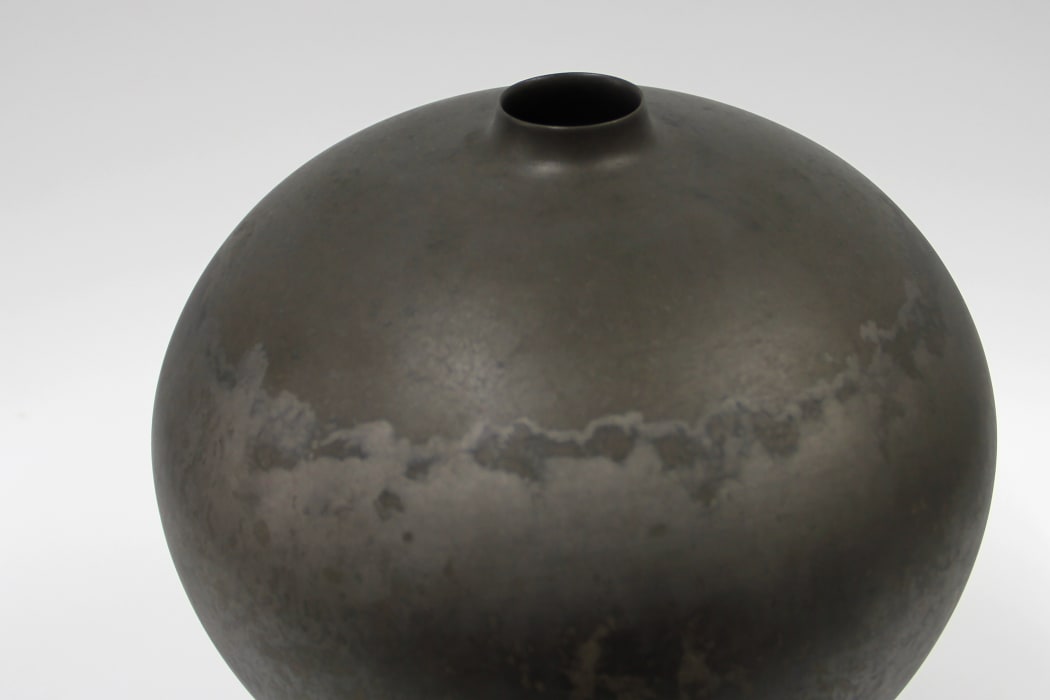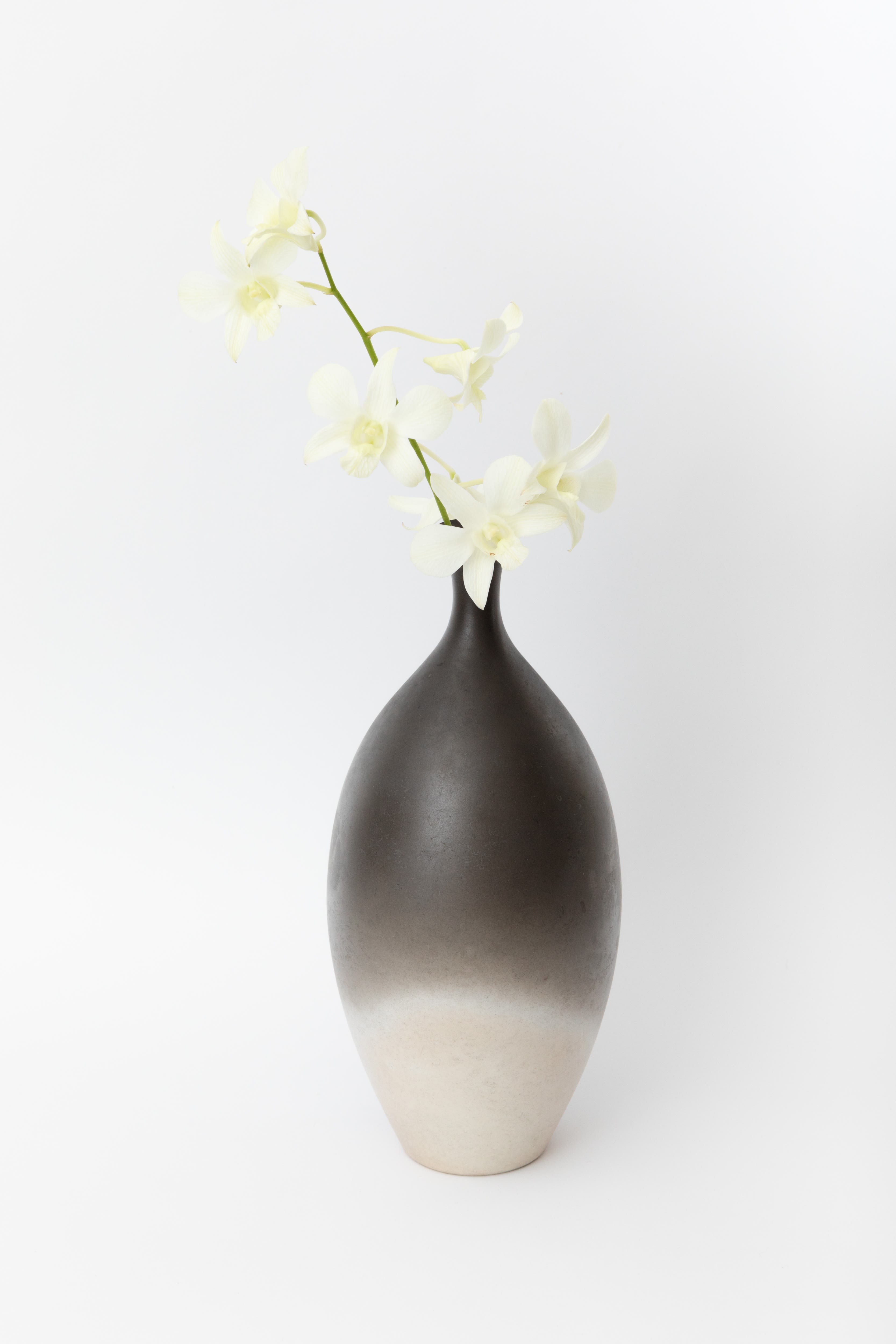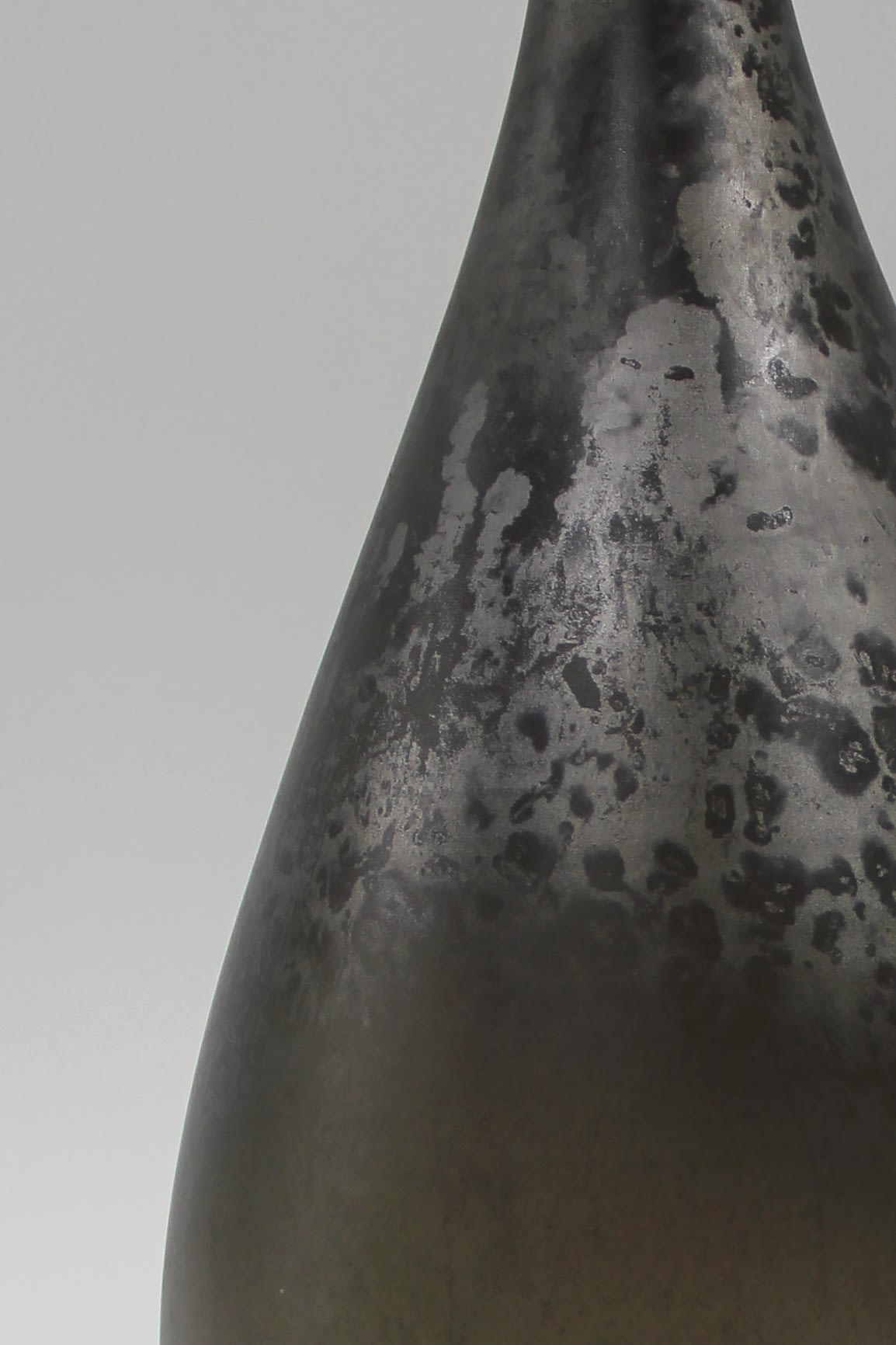
Traditional craftsperson Kiyoko Morioka (1974 – present) has found repute for her innovative take on Kutani style porcelain. Kutani ware dates to the Meireki era (1655 – 1858) in the Ishikawa prefecture, where Morioka’s kiln resides today. Morioka’s treatment of the porcelain surface separates her from other forms of Kutani; while the traditional technique typically involves primary colors and painted patterns, Morioka forgoes these distractions to highlight the texture and depth of the porcelain itself. The artist’s intention is to inspire appreciation for the delicate material and the beauty of the natural colors achieved through a rice-smoking process. 
Kiyoko Morioka’s studio in Kanazawa, Japan, 2022
The precise and harmonious contours of Morioka’s pieces are the product of careful handiwork with her three favorite tools: the potter’s wheel, a bucket of water, and her hands. Once she is content with her forms, she places the clay in boxes to protect the surface from the heat and the smoke of burning rice husks, resulting in tender gradients and a milky sheen.
Morioka’s works are a mode of tender expression. The objects are an opportunity for a shared experience; Morioka, when making each work, clears her mind and sharply concentrates on shaping the fragile clay. In her eyes, the works are a means of non-verbal communication; “physical distance with people is not really distance. I’ve realized that there are things that can be conveyed through words and things that cannot, and so I am very glad that I have a job where I can convey emotions and meaning through objects.”
Kiyoko Morioka, 1974-present, Flower Vase "Silver Crystal" - 鶴首花器「銀結晶」Ceramic, (CC20645P)
Kiyoko Morioka is a perfectionist in regards to her works, producing only small batches of work at a time. The result is a concentrated collection of sublime objects that are completely free of error and perfect in shape.
In some of Morioka’s pieces, she expertly directs a viewer’s attention to the natural splendor of the vase by constricting the mouthpieces so that only a single flower or two may display at one time. The restriction imposed by these formal choices invite viewers to dive deeper into the subtly variable grey tones. For the artist, the gentle texture of the porcelain surface combines with the vast depth of neutral color to produce a wistful Kanazawa sky.

Kiyoko Morioka, 1974-present, Flower Vase - 鶴首花器, Ceramic, (C24482)
The process of creating a Kutani-style works involves nine rigorous steps; though for a dappled work, the ware must be left to oxidize in-between firing:
- Clay kneading
- Clay molding, using a potter’s wheel
- Drying
- Quick firing
- Surface design
- Glazing
- Long firing
- Further surface design
- Repeat firing

Kiyoko Morioka, 1974-present, Flower Vases, Ceramic, left to right: (C24481), (C24475), (C24480)

Kiyoko Morioka, 1974-present, Grouping, Ceramic, left to right: (C24462), (C24478), (C24482)
Morioka’s works vary tremendously in form and size, though each reflects the bliss at the center of the artist’s practice. She continues to steadily produce astounding porcelain works from her kiln in Kanazawa. For Morioka, creating works is a mode of expression, which she compares to climbing a mountain; “I understand that there are two ways to climb a mountain. One way is to climb the mountain with concept, and the other is to climb the mountain of technique. Today, I create with the thought that if I just keep climbing, I will find new and exciting modes of expression.”
Sources:
https://www.aisf.or.jp/~jaanus/deta/k/kutaniyaki.htm
